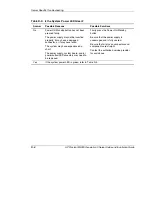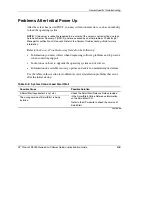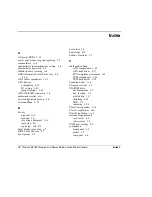
Server Specific Troubleshooting
5.
Power up the server. Refer to Chapter 2, “Server Operations.”
All configuration settings are now erased and all server operations halt.
6.
When prompted during POST, power down the server.
7.
Reset the position 6 switch to the default
Off
position.
8.
Power up the server.
9.
Reset all system configuration settings by pressing the
F9
key (or the
F8
key if
you are using an ATA model) to run RBSU.
For complete instructions on the use of RBSU, refer to Chapter 5, “Server
Configuration and Utilities,” or refer to the
HP ROM-Based Setup Utility User
Guide
.
ROMPaq Disaster Recovery
If both the current and backup versions of the ROM are corrupt, perform ROMPaq
disaster recovery procedures:
1.
Create a ROMPaq diskette using the Autorun Menu on the SmartStart CD.
2.
Power down the server. Refer to Chapter 2, “Server Operations.”
3.
Insert the ROMPaq diskette.
4.
Power up the server. Refer to Chapter 2, “Server Operations.”
a.
The server generates one long beep and two short beeps to indicate that you
are in disaster recovery mode. If the diskette is not in place, the system
continues to beep until a valid ROMPaq diskette is inserted.
b.
The ROMPaq diskette flashes both system ROM images. If successful, a
sequence of ascending audible beeps is generated. If unsuccessful, a
sequence of descending audible beeps is generated and you need to repeat the
disaster recovery process.
5.
Power down the server.
6.
Remove the ROMPaq diskette.
7.
Power up the server.
HP ProLiant ML330 Generation 3 Server Setup and Installation Guide
D-13
HP CONFIDENTIAL
Writer: Rob Weaver File Name: k-appd Server Specific Troubleshooting.doc
Codename: Flashback Part Number: 322383-001 Last Saved On: 2/11/03 1:35 PM


























